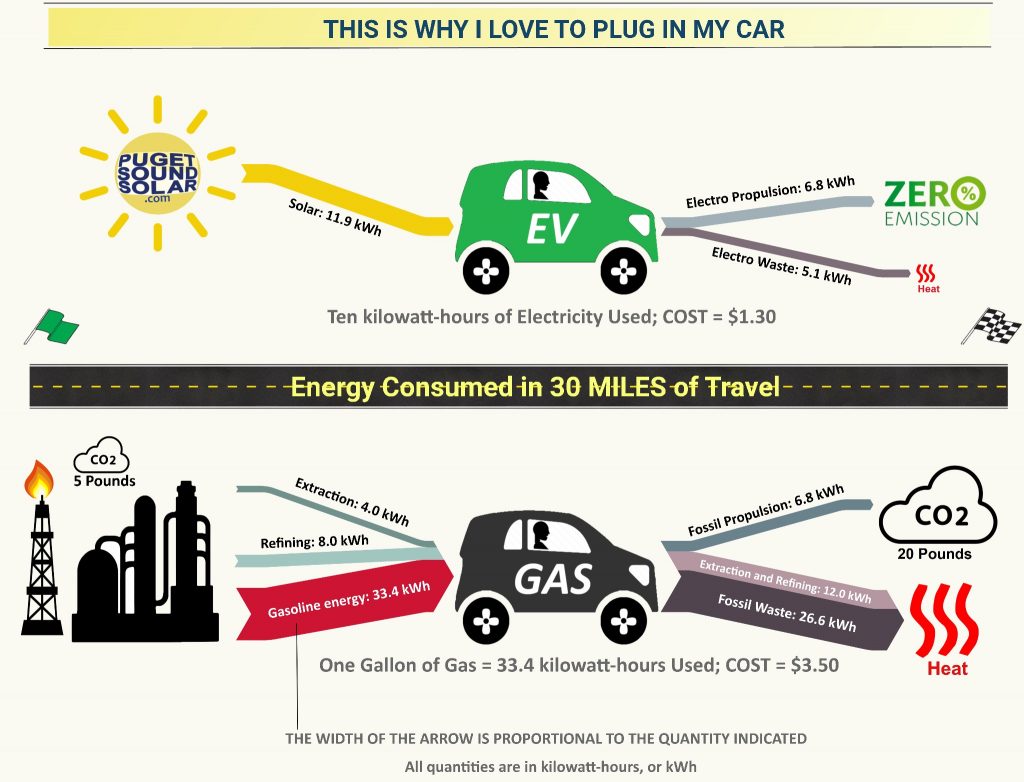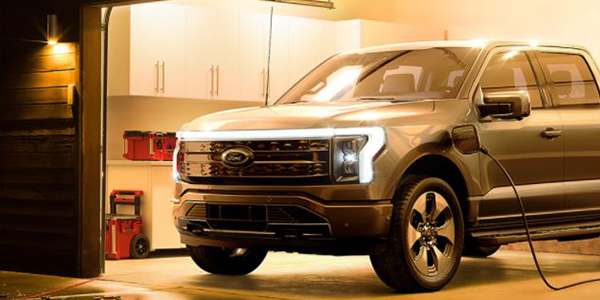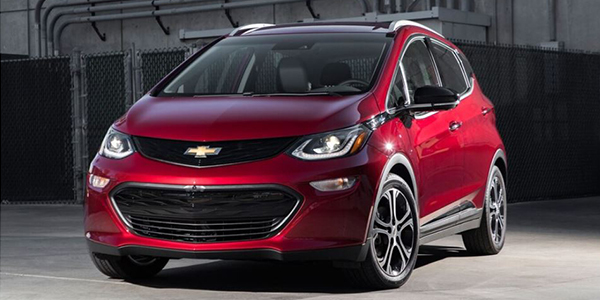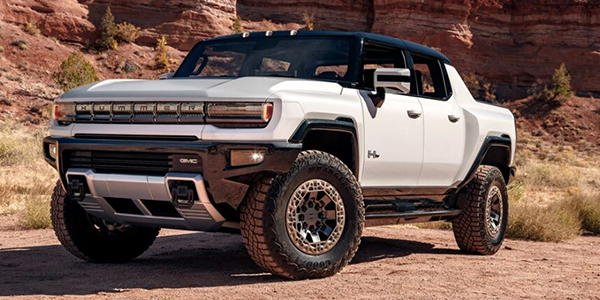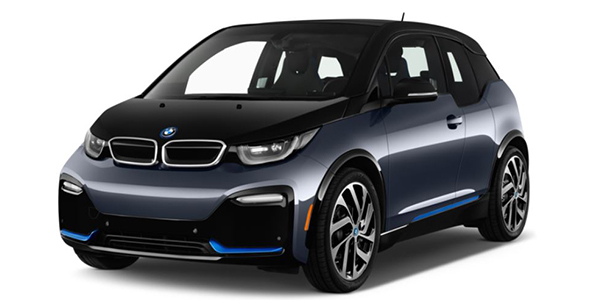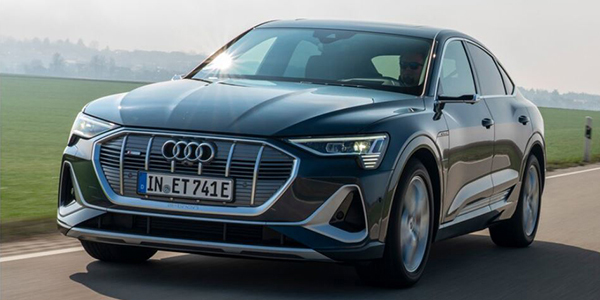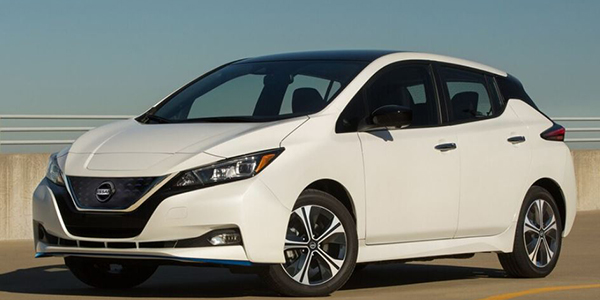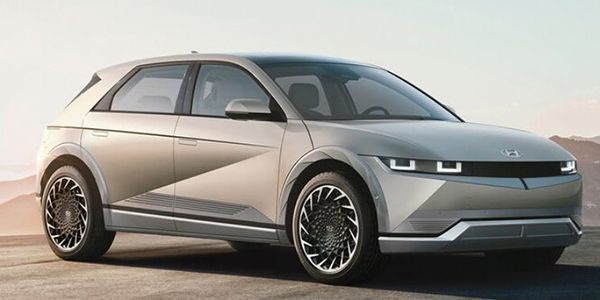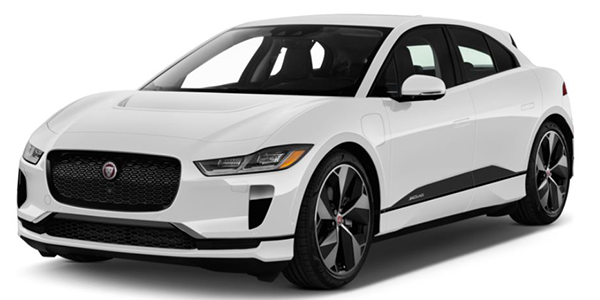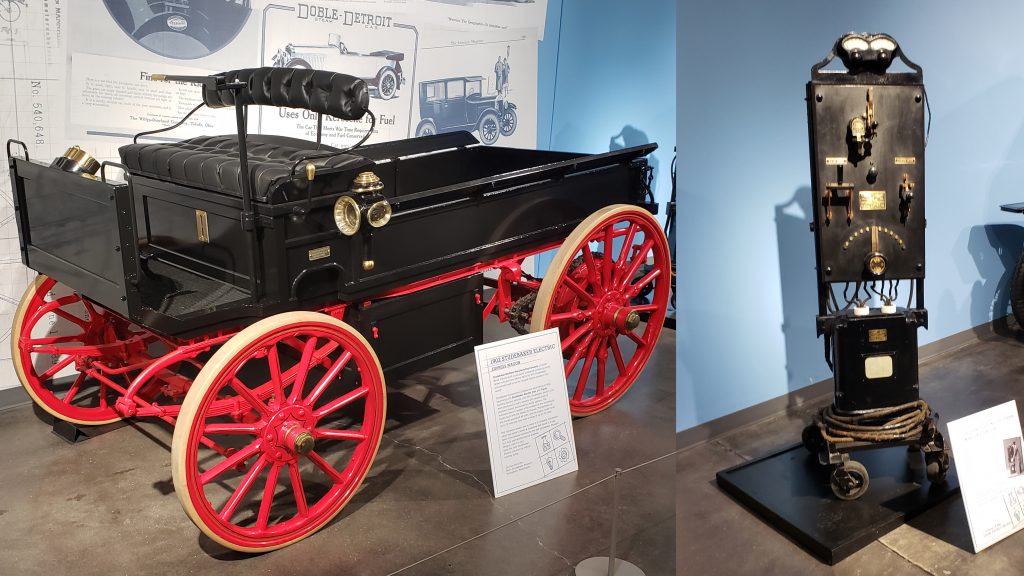
Over one hundred years ago, electric vehicles were available and the preferred option until the lure of cheap petroleum and longer range became available with internal combustion engines. In the interim, electric cars were mostly forgotten but the advent of lithium-ion batteries combined with the threat of the Climate Crisis sparked a renewed interest in electric vehicles.
Increasingly we’re seeing advertisements from car manufacturers not named Tesla promoting the “new” generation of automobiles, electric vehicles. Traditional US manufacturers Ford, Chevrolet, General Motors are part of the evolution, transitioning their offerings from internal combustion engines to electric. Overseas manufacturers like Audi, BMW, Nissan, Honda, Hyundai, Jaguar, Kia, Lamborghini, Lexus, Mazda, Mercedes plus many others who are delivering consumers a wide range of options.
Why the changeover from gasoline-based engines? It’s simple, electric cars are now cheaper in the long run, more reliable than gassers and they’re better for the planet. They’re not slow-poke, glorified golf carts, they’re super-fast!
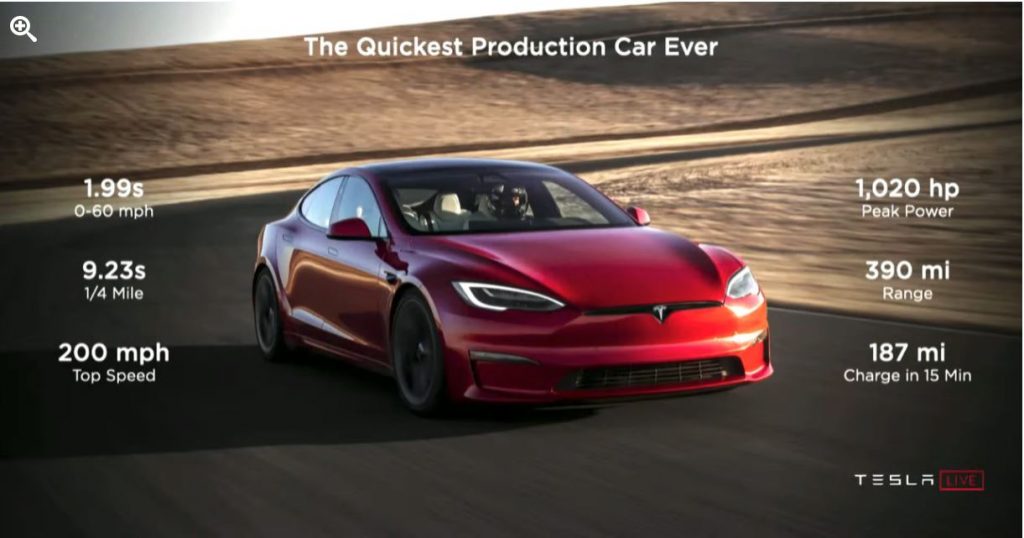
Tesla’s Plaid set a new world speed record for a production vehicle – the previous record holder was the Bugatti Chiron Sport, a $3,500,000 car. (Comparatively, Plaid comes with a sticker price of $132,000.)
Jay Leno talks with CNBC’s Shepard Smith about the world record and his impressions about electric cars.
As Jay Leno referenced in his interview, in general our adoption rates of new technology is accelerating. The charts below examine historical trends in the adoption rates of new products/technologies alongside the growth curve of electric vehicle sales.
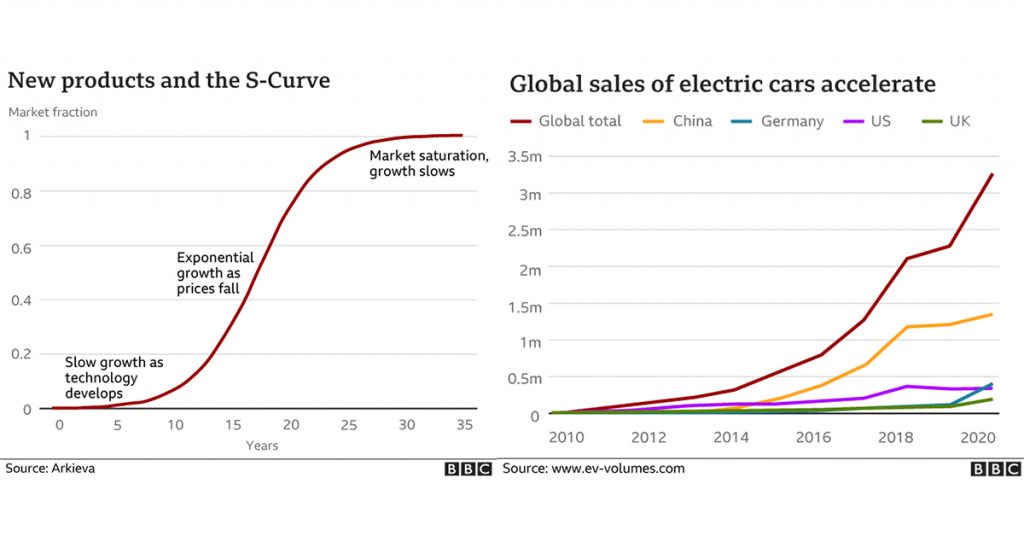
Fighting The Climate Crisis
Here in Washington, the Clean Cars 2030 Bill passed through the Legislature, only to be vetoed by Governor Inslee after Senator Steve Hobbs inserted an amendment tying in a road usage surcharge. Even without this legislation becoming law, it’s clear on local, national and international levels that governments are developing policy to support the transition to electric vehicles as part of an effort to fight the Climate Crisis. In Washington, transportation is responsible for about 40% of our carbon emissions.
PBS’s NOVA show has a great visualization about internal combustion engine vehicle’s carbon emissions. Imagine seeing the carbon your internal combustion engine leaves behind …
Smarter, Interactive Technology

Electric vehicles offer new solutions that internal combustion engines simply cannot match. Imagine using your car to power your house in the case of a power outage. Tesla PowerWall’s (12.2kw) and Enphase’s Encharge (10.08kw) offer state-of-the-art battery backup for homeowner. Instead of using a stationary battery to power emergency loads, imagine using your EV battery instead. Bi-directional charging is about to become another option for EV owners. Tesla’s Model S hold 110Kw of energy storage, ten times what a single PowerWall can hold. Ford’s Lightning pickup truck (115-155Kw) is being designed for this capability and expect other manufacturers to follow suit. Being able to move your backup emergency power source wherever your vehicle can take you is empowering.
How we think about and use our vehicles is undergoing a huge transformation!
Save Money By Driving Electric
There are a lot of costs involved when you own and operate a gas vehicle that don’t come when you own an electric vehicle which also has fewer parts that can break down over time. When you own an electric vehicle, you can say goodbye to oil, coolant, transmission fluid and miscellaneous belts and hoses that need to be replaced on a regular basis. The biggest impact is at the fuel pump. The cost of gasoline varies depending upon variables outside your control. When OPEC decides to slow production, it impacts the cost of the gas you’re buying. Seasonally, the petroleum companies charge more during summertime! Electric Utilities continue to increase their rates, but they’re more predictable. A recent study shows that while EV’s are more expensive initially, they save the owners money in the long run.
How much does it cost to charge a Tesla? EV vs. gas fuel comparison.
If you drive a Tesla or are thinking about buying one, here’s a charging cost breakdown for several different Tesla models. The average cost per mile with Tesla’s base models is only $0.0412!
Electric Car Aficionados In Washington State Can Make The Best Case For The Big Purchase.
“Over the anticipated 15-year life span of a vehicle, the electricity required to run a battery-powered electric car can be as much as $14,480 cheaper than fueling up an internal combustion vehicle.”
This is because electricity costs much less in Washington State than in the rest of the United States.
In June 2021, the cost of a gallon of gas in Washington is $3.13 and an “e-gallon” is just $0.89. But there’s a way to drive the cost of your fuel down much further …
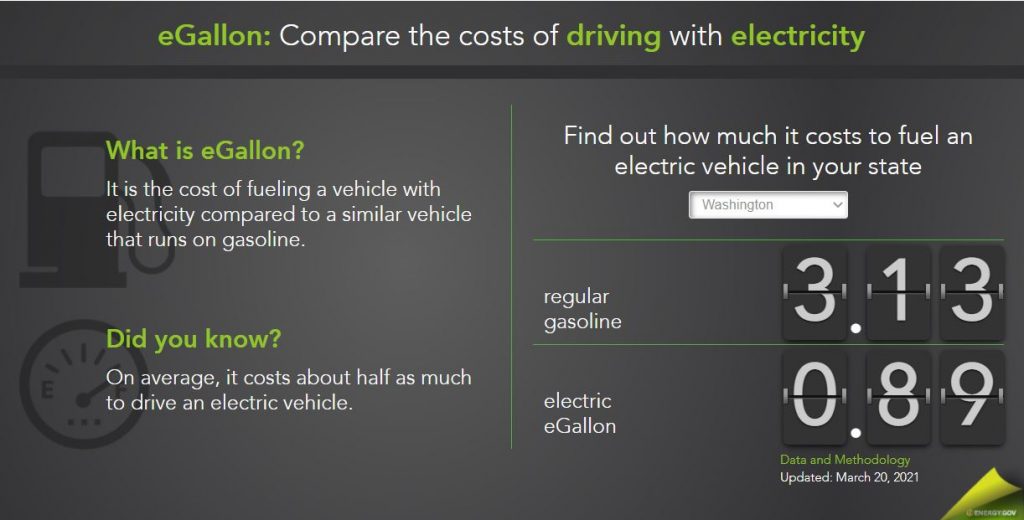
… Go Solar, Own Your Fuel & Control Your Fuel Costs
When you have solar, you own the fuel, and you control electricity costs by locking it in at a levelized price for the long run. In fact, the electric vehicle helps justify the purchase of a solar PV system. Eight 375 watt solar panels will produce enough electricity in Seattle to run an electric car about 10,000 miles per year while being more efficient with the energy it does use.
Solar PV systems are warrantied for 25-years so once your solar PV system is completely paid for, your fuel costs when charging at home are $0.00! When considering the gasoline vs e-gallon savings alone, many solar PV systems can pay themselves off in as little as six-years.
Not only are they money savers, EV’s are also more efficient than internal combustion engines.
